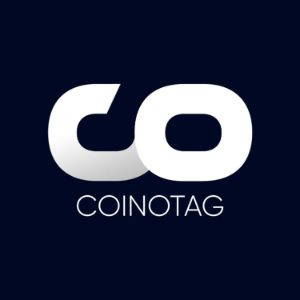Market Pulse
Euler, a prominent decentralized lending protocol, has set the crypto community abuzz with hints of an impending launch for its own synthetic dollar product. This strategic move could signal a significant evolution in the stablecoin landscape, offering a new, decentralized avenue for users seeking a stable value asset within the dynamic world of decentralized finance (DeFi). As innovation continues to redefine financial paradigms, Euler’s venture into synthetic assets is poised to reshape collateralized debt positions and introduce fresh dynamics to the broader crypto ecosystem.
A New Paradigm in DeFi Stablecoins
Unlike traditional stablecoins such as USDC or USDT, which are typically backed by fiat currency held in conventional bank accounts, a synthetic dollar in the DeFi realm is fundamentally different. It is not directly pegged to fiat currency via a custodial bank but is instead overcollateralized by various crypto assets (like Ethereum or Bitcoin) locked within a smart contract. This innovative approach aims to create a stable asset that derives its value from a basket of volatile cryptocurrencies, managed by a set of automated rules and incentives rather than a centralized entity.
The concept of a synthetic dollar emphasizes decentralization and censorship resistance, distinguishing it from fiat-backed stablecoins that carry counterparty risk and are subject to traditional financial regulations. While algorithmic stablecoins have historically faced challenges related to peg stability, Euler’s approach, leveraging its established lending infrastructure, is expected to focus on robust overcollateralization and sophisticated peg maintenance mechanisms, drawing parallels to successful models like MakerDAO’s DAI.
The Mechanics of Euler’s Offering
Given Euler’s existing role as a non-custodial lending protocol, its synthetic dollar product is likely to integrate seamlessly with its current platform, allowing users to mint the stable asset against a diverse range of accepted collateral. This typically involves users depositing cryptocurrency collateral (e.g., ETH, wBTC, or other DeFi tokens) into a vault and borrowing the synthetic dollar against it. The overcollateralization ratio ensures that the value of the locked assets significantly exceeds the minted synthetic dollars, providing a buffer against market volatility.
- Decentralized Issuance: Users mint synthetic dollars directly via smart contracts, removing reliance on central issuers.
- Overcollateralized Design: A key security feature, ensuring minted tokens are backed by more value than their face value, mitigating risk.
- Peg Stability Mechanisms: Incorporates arbitrage opportunities and dynamic interest rates (stability fees) to maintain its peg to the US dollar.
- Integration with Euler’s Platform: Leverages Euler’s existing liquidity pools and risk management framework for efficient minting and redemption.
- Capital Efficiency: Potentially allows users to generate stable assets from their volatile holdings without selling them, unlocking liquidity.
Implications for the Stablecoin Landscape
The introduction of Euler’s synthetic dollar could intensify competition among decentralized stablecoins, particularly challenging established players like DAI. For users, it offers an additional option for a censorship-resistant, capital-efficient stable asset, broadening the choice for those deeply embedded in the DeFi ecosystem. Such innovation supports the broader vision of a more resilient and self-sufficient decentralized financial system, less dependent on traditional financial rails.
However, the venture is not without its risks. Synthetic assets are inherently exposed to smart contract vulnerabilities, potential oracle failures, and the volatility of their underlying collateral. Maintaining a stable peg during extreme market conditions requires meticulous design and active community governance. Furthermore, as synthetic stablecoins grow in prominence, they are likely to attract increased scrutiny from global regulators, adding another layer of complexity to their long-term viability and adoption.
Conclusion
Euler’s foray into the synthetic dollar market represents a bold step forward for decentralized finance, embodying the ethos of innovation and self-sovereignty that underpins the crypto movement. By offering a new, decentralized stable asset, Euler aims to enhance capital efficiency and provide robust alternatives to existing stablecoin models. While challenges, particularly around risk management and regulatory adaptation, persist, this development underscores the continuous evolution of DeFi and its potential to build a more open and accessible financial future.
Pros (Bullish Points)
- Introduces a new decentralized, censorship-resistant stablecoin option for the DeFi ecosystem.
- Leverages Euler's existing infrastructure to offer potentially more capital-efficient stable asset generation.
Cons (Bearish Points)
- Exposes users to inherent smart contract risks, oracle dependencies, and potential collateral volatility.
- May attract increased regulatory scrutiny to the synthetic stablecoin sector, posing adoption challenges.



